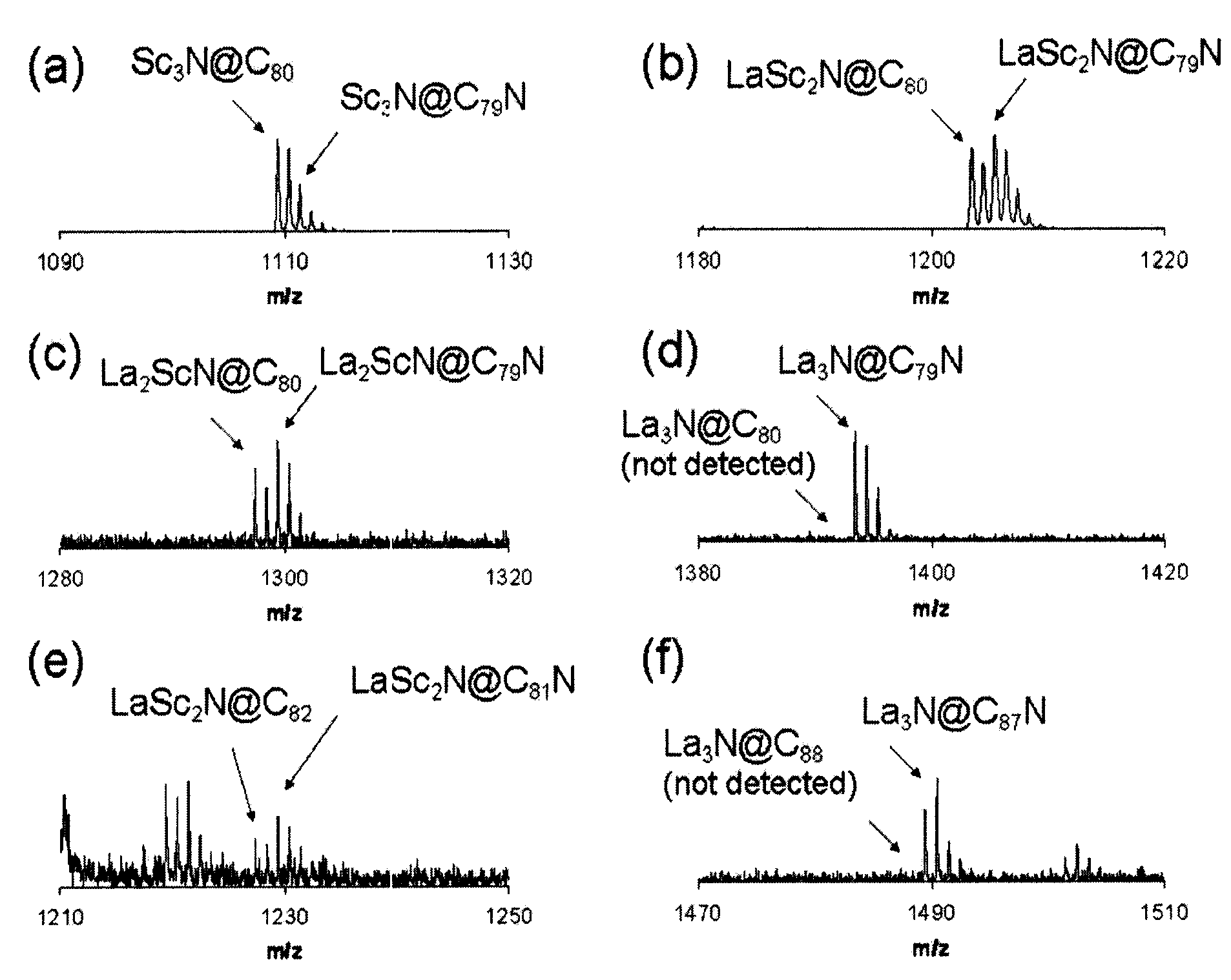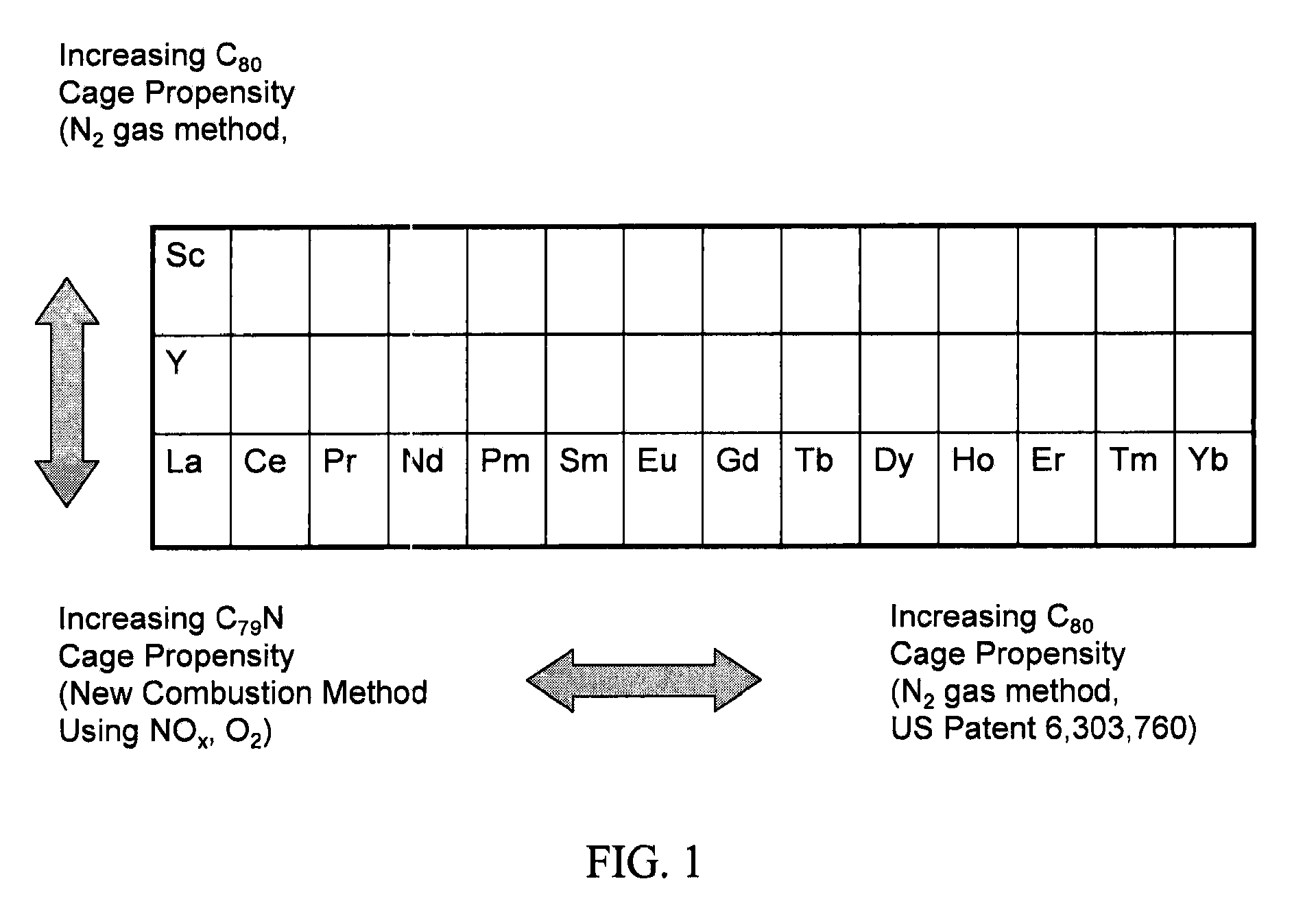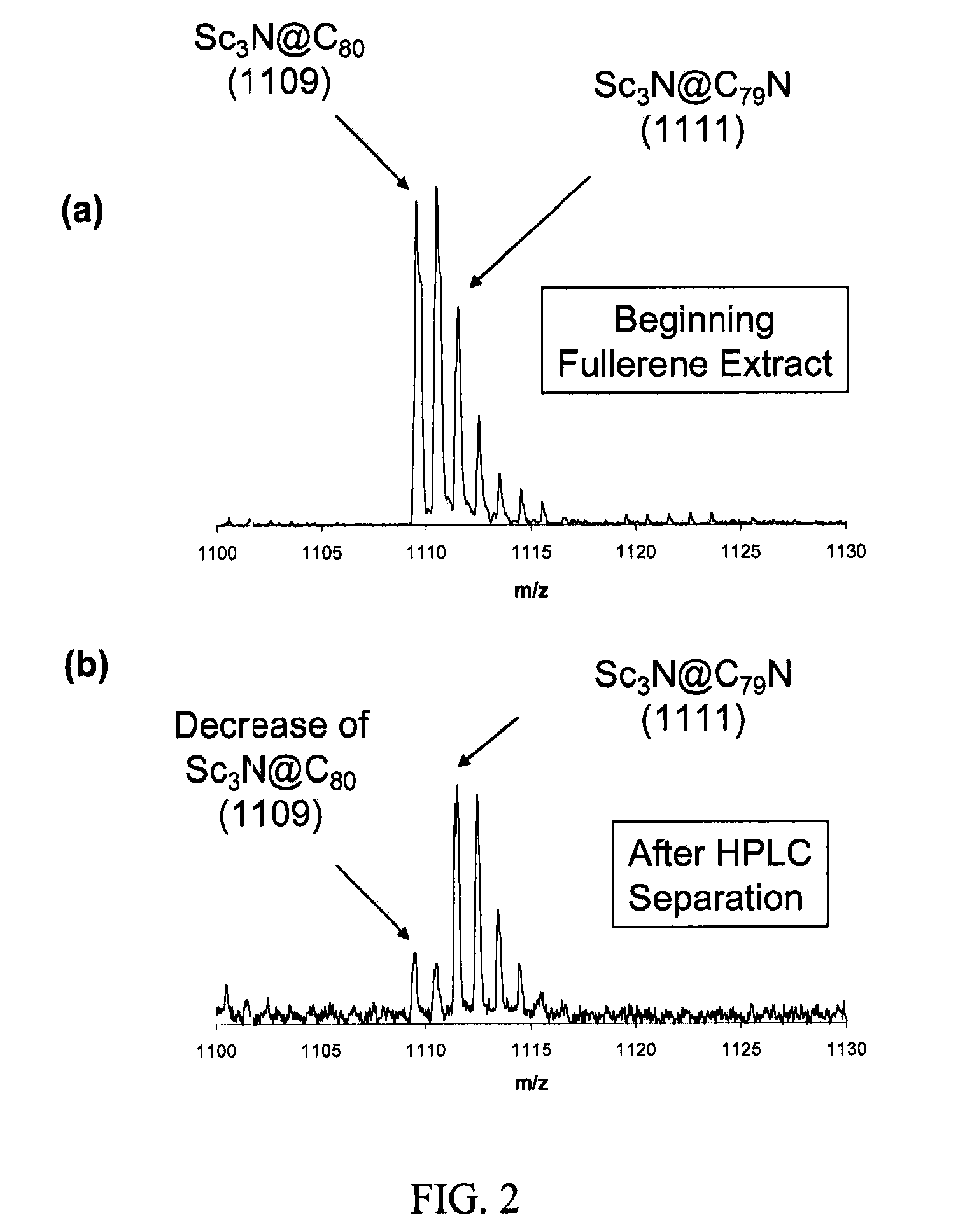Trimetallic Nitride Clusters Entrapped Within CnN Heteroatom Cages
a technology of trimetallic nitride and heterofullerene, which is applied in the direction of fullerenes, group 3/13 organic compounds without c-metal linkages, other chemical processes, etc., can solve the problems of small amounts of metal fullerenes and complicated process of metal encapsulated fullerenes
- Summary
- Abstract
- Description
- Claims
- Application Information
AI Technical Summary
Problems solved by technology
Method used
Image
Examples
example 1
Synthesis of Homometal, Trimetallic Nitride Clusters in HeteroFullerene Cages (A3N@CnN)—Type I
[0032]Upon vaporization of the packed rod using the electric-arc process under these oxidizing and combustive conditions, this new class of molecules are formed, along with other common types of empty-cage fullerenes (e.g., C60, C70, C84, etc), classical metallofullerenes without nitrogen (e.g., M@Cn, M2@Cn, M3@Cn, M4@Cn, etc), and predominantly amorphous carbon soot. Solvents such as xylene or carbon disulfide can be added to this asproduced dry soot for extraction of fullerene material. Upon subsequent (1) filtration to remove insolubles (e.g., amorphous carbon, nanotubes, etc.) and (2) solvent evaporation, a dried fullerene-containing extract is obtained. Analysis of fullerene extract by MALDI mass spectrometry reveals the presence of our new composition of matter. FIG. 2 shows that the SC3N@C79N species is present as a very minor component in the soot extract. However, after subsequent ...
example 2
Synthesis of Mixed Trimetallic Nitride Clusters in HeteroFullerene Cages (AxZ3-x@CnN)—Type II
[0034]Alternatively, the trimetallic nitride cluster can contain a mixture of different metal types to form our new Type II molecule. Synthetically, this species is made by mixing the desired metals into the packing material (anode) prior to electric-arc vaporization. Mass spectral analysis of soot extracts prepared in such a manner is shown in FIG. 3. Representative examples include, but are not limited to, scandium metal atom(s) mixed with rare-earth metals such as Pr, La, and Gd. The formation of La3N@C79N, Sc3N@C79N, LaSc2N@C79N, and La2ScN@C79N are shown in FIG. 4. Also of note, a representative example with Gd / Sc mixtures shows that Gd2ScN@C79N and GdSc2N@C79N can both be made. These Gd / Sc molecules are especially of relevance as new candidate, MRI contrast agent pharmaceuticals.
PUM
 Login to View More
Login to View More Abstract
Description
Claims
Application Information
 Login to View More
Login to View More - R&D
- Intellectual Property
- Life Sciences
- Materials
- Tech Scout
- Unparalleled Data Quality
- Higher Quality Content
- 60% Fewer Hallucinations
Browse by: Latest US Patents, China's latest patents, Technical Efficacy Thesaurus, Application Domain, Technology Topic, Popular Technical Reports.
© 2025 PatSnap. All rights reserved.Legal|Privacy policy|Modern Slavery Act Transparency Statement|Sitemap|About US| Contact US: help@patsnap.com



